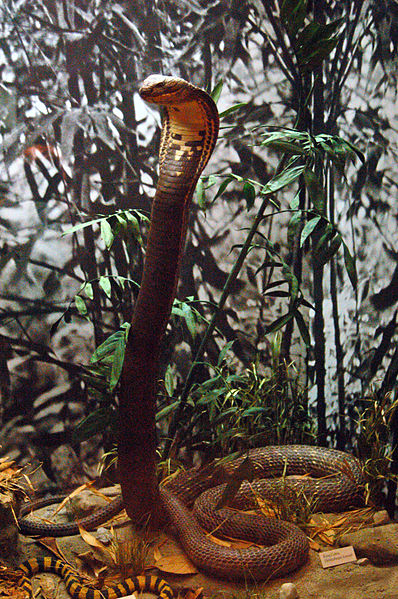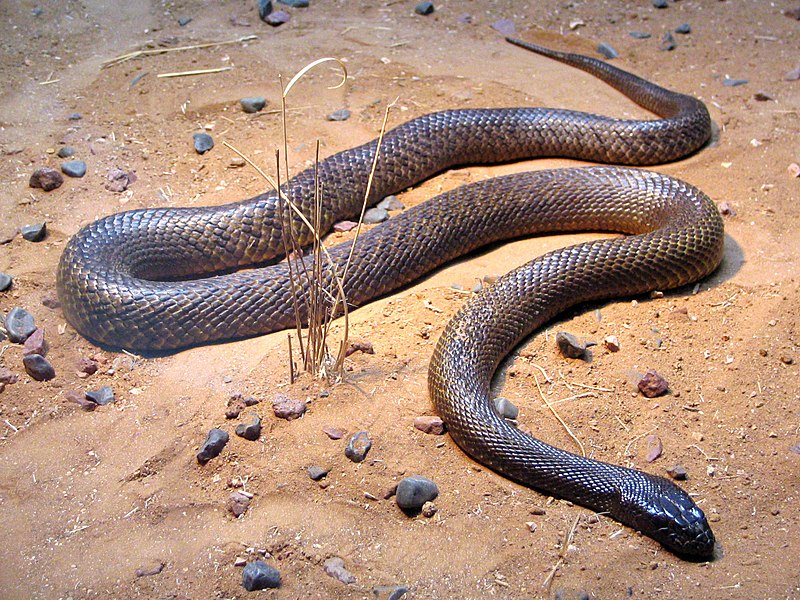

| Visitors Now: | |
| Total Visits: | |
| Total Stories: |

| Story Views | |
| Now: | |
| Last Hour: | |
| Last 24 Hours: | |
| Total: | |
Kiss Of Death: Ten Creatures That Kill With A Single Bite Or Sting
The great physical strength, powerful fangs and sharp as a blade teeth are not the only weapons that are used in the animal world. Thousands of animals use highly toxic poisons to attack or for defense.
Here is a list of the ten most venomous creatures in the world.
1. Cubomedusa (Chironex fleckeri)
The number one ranking goes to cubomedusa (Chironex fleckeri), which received its name because of its cubic form. Box jellyfish (class Cubozoa) are cnidarian invertebrates distinguished by their cube-shaped medusae. Box jellyfish are known for the extremely potent venom produced by some species: Chironex fleckeri, Carukia barnesi and Malo kingi are among the most venomous creatures in the world. Stings from these and a few other species in the class are extremely painful and sometimes fatal to humans.
During the last 60 years, this “sea wasp” claimed about 6000 lives. Its venom is the most deadly in the world, toxins affect the heart, nervous system, and skin cells.

Even worse, all is accompanied by such hellish pain that victims are in a state of shock and either drown or die of cardiac arrest. If one is able to treat the wound with vinegar or acetic acid, the victim has a chance, but swimmers rarely have these things available at the beach.
Cubomedusa is found in the ocean waters of Asia and Australia.
2. King Cobra (Ophiophagus hannah)
King Cobra is the longest venomous snake in the world, reaching 5.6 meters in length.
The king cobra’s generic name, Ophiophagus is a Greek-derived word which means “snake-eater”, and its diet consists primarily of other snakes, including ratsnakes, small pythons and even other venomous snakes such as various members of the true cobras (of the genus Naja), and even the much more venomous members of the krait family. A single bite of this deadly snake can easily kill a man. It can kill even adult Asian elephant within 3 hours if the animal is bitten in a vulnerable place, such as a trunk.

Among the snakes few are more toxic than the King Cobra, for example is is 5 times more deadly than the Black Mamba. King Cobra is widespread in dense mountain forests of South and Southeast Asia.
3. Scorpio Leiurus quinquestriatus
Contrary to popular belief, most scorpions are relatively safe for humans because their stings cause only pain, anemia or swelling. Leiurus quinquestriatus is known as the death stalker.
Leiurus quinquestriatus is a very dangerous scorpion species because its venom – a strong cocktail of neurotoxins which causes an intense and unbearable pain, then fever, followed by coma, convulsions, paralysis and death.

4. Taipan or Fierce Snake (Oxyuranus microlepidotus)
The Taipan is a genus of large, fast, highly venomous Australasian snakes of the elapid family.
Just one bite Taipan contains enough venom to kill 100 adults or an army of 250 thousand mice.Its extremely neurotoxic venom – at least 200-400 times more toxic than cobra venom usual.

Inland taipans adapt to their environment by changing the color of the skin during seasonal changes. They tend to become lighter during summer and darker during the winter. This seasonal color change serves the purpose of thermoregulation, allowing the snake to absorb more light in the colder months.

In just 45 minutes after being bitten by an adult death can occur. But fortunately, there is an antidote, moreover, the snake is very timid and immediately vidpovzaye away by the slightest danger. He lives in Australia.
5. Poison dart frog
If you ever manage to visit the rain forests of Central and South America, in any case can not touch young beautiful poison dart frog - they can be extremely poisonous.


For example, the size of golden poison dart frog – only 5 cm, and poison in it enough to kill 10 adult humans.
In the past, local tribes used poison these frogs on their their arrows.
6. Blue-ringed octopuses (genus Hapalochlaena)
The blue ringed octopus is small, the size of a golf ball, but extremely venomous creature living in the coastal waters around Australia and slightly north toward Japan.

Blue annular octopus usually light in color, with dark brown groups located on its legs and body, with blue circles that imposed on these dark brown band.

When disturbed octopus, it darkens, and rings are shiny and colors become an electrician.
In fact, the octopus has enough venom to kill 26 adults in a couple of minutes and there is no antidote.
The person begins to feel numbness, difficulty in speech, vision, trouble breathing, then comes complete paralysis and death due to cardiac arrest and lack of oxygen.
7. Brazilian Wandering Spider (Phoneutria) or banana spider
The Brazilian wandering spiders appear in Guinness World Records from 2010 to present as the world’s most venomous spider.This abomination got into the Guinness Book of Records in 2007 for causing the largest number of human deaths due to a spider bite.

Importantly, these spiders are dangerous not only for its venom, but their behavior: they do not sit still and do not spin webs. They travel along the ground, hiding in buildings, clothes, shoes, cars, anywhere, which significantly increases the risk of unexpectedly meeting them and being bitten.
8. Pufferfish (Tetraodontidae)

Certain internal organs, such as liver, and sometimes the skin, are highly toxic to most animals when eaten; nevertheless, the meat of some species is considered a delicacy in Japan (as pronounced as fugu), Korea (as bok), and China (as hétún) when prepared by chefs who know which part is safe to eat and in what quantity.
9. Marbled Cone Snail (Conus marmoreus)

Signs of a bite include pain, swelling, numbness, in serious cases, paralysis occurs with an inability to breathe. There is no antidote.
10. Stonefish (Synanceia)

The stonefish will never win a beauty contest, but it definitely gets the prize “most poisonous fish.” There have been unproven reports of osteo-arthritic sufferers experiencing improved mobility and reduction in joint pain following envenomation episode. The responsible agent has not been identified.
The pain is said to be so severe that the victims of its sting have been known to demand that the affected limb be amputated.

It is believed that the bite of fish stone provokes most severe pain known to man. The pain is accompanied by shock, paralysis, and tissue death.




Source! Source!! Source!!!
http://nanopatentsandinnovations.blogspot.com/2012/11/kiss-of-death-ten-creatures-that-kill.html
Google the first paragraph dweeb. There’s your source.
This article is totally correct. Australia has box jellyfish up north so they keep vinegar handy. Funnelweb spiders in Sydney region, even Redback spiders can make you quite ill. Then there are deadly Taipan,Tiger,Dugite,Death Adder,Mulga (King Brown) Red bellied,yellow bellied,scrub pythons etc snakes. Puffer fish you don`t have to worry about unless you eat one. You don`t touch Blue Ringed octopusses in rock ponds. I once prodded a tiny normal octopus in a rock pool & the ink came out of the water a few inches at me! Yes there are stone fish in North Aus latitudes from Brisbane up. And there are cane toads which you only touch with gloves on. Lastly there have been 5 fatal shark attacks in Western Australia in the last year. So book your plane ticket & we will see you soon… AJ, Perth, West Oz.
We have more venomous creatures than these in the whitehouse, shadow govn’ts, and cowardly so-called self pro-claimed elites of the NWO, Illuminati, skulls and bones, catholic church, pope, the queen and all in the british empire, UN, EUN, WHO, FDA, CIA, FBI, CDC, DHS, TSA, Tavistock, Medical field, the criminal thug’s called the bush’s and so on….
Your unwarranted slug-level slurs against the Holy Catholic Church and the Vicar of Christ are more poisonous and ugly than all the creatures mentioned in this article.
You sound more like a fallen angel than a guardian angel.
Forgot the African black Mamba.
This is interesting.
Is there any map detailing where this species can be found?